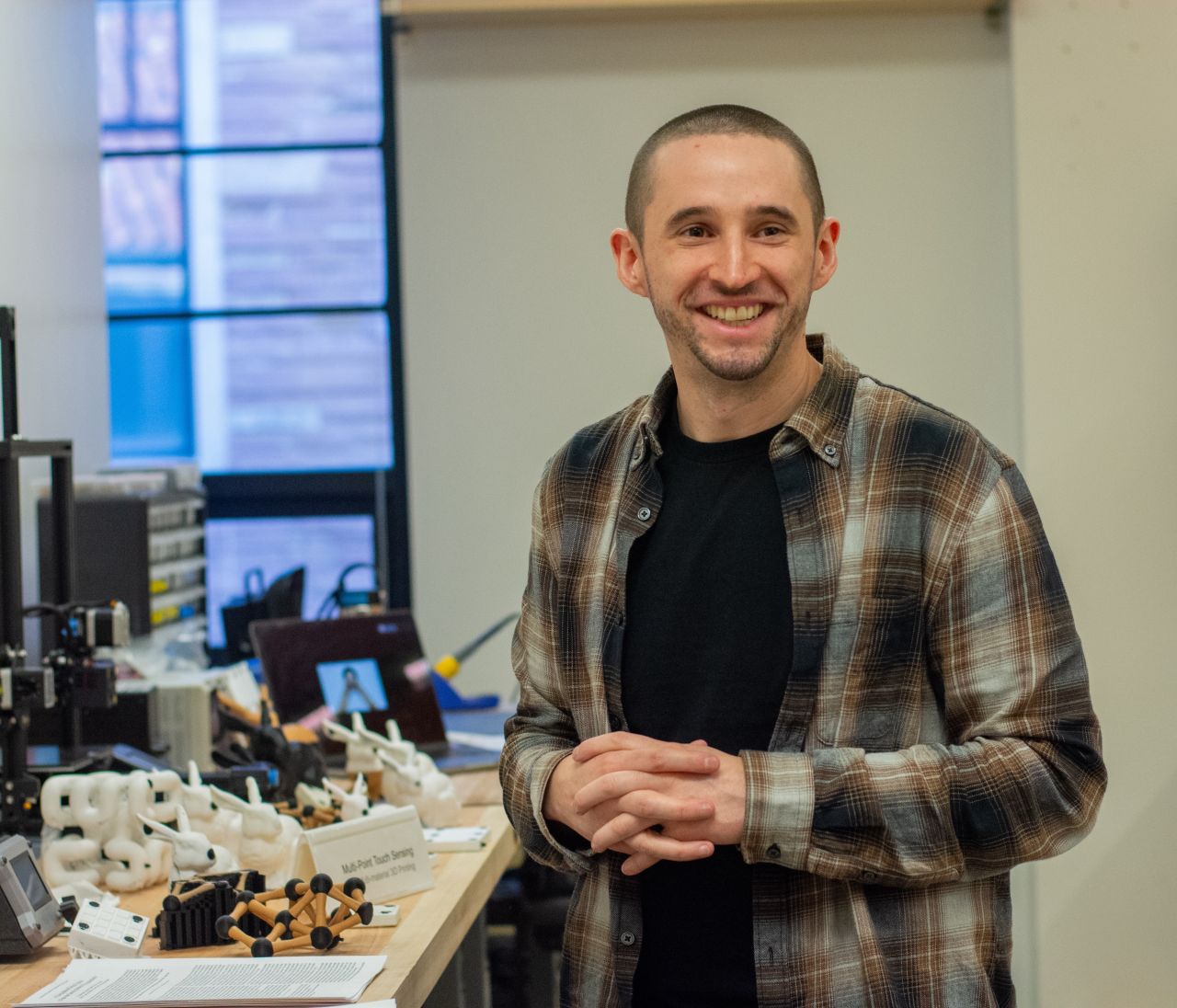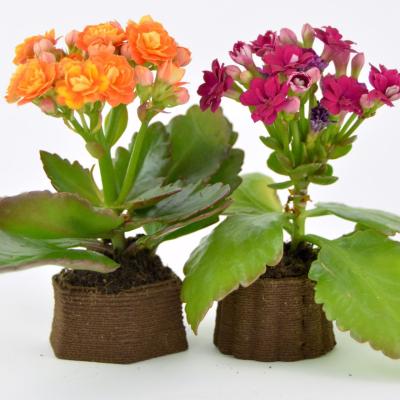Related People
Scott Hudson
Brewing Sustainability
CMU alum Mike Rivera powers up 3D printing with coffee grounds
It took a lot of coffee to power Mike Rivera’s push toward a doctorate degree in human-computer interaction at Carnegie Mellon.
And it took a lot of coffee grounds to percolate Mike’s idea of making 3D printing more sustainable.
Mike, a computer science professor at the University of Colorado-Boulder, has come up with a method of 3D printing that uses those spent beverage grounds as the printing material. And the caffeinated items he and his colleagues print are stronger than a double espresso.
Or, in fact, unreinforced concrete.
“(People are) always surprised it doesn't crumble,” Mike says. “It's pretty rigid.”
Mike didn’t stray far when it came to figuring out what to initially print with the coffee material — he says espresso cups were a natural choice. One problem: A hot liquid would dissolve the printed cups.
“But if you coat it in beeswax or other natural waxes, it can actually hold liquid,” he says.
The grounds, which are mixed with cellulose gum — a common food additive — as a binder, could also print ornamental objects like necklaces or planting pots that can go directly into the ground when a seedling is ready to be transplanted.
The entire process can be completed on a modified consumer-grade printer at home. And when you’re done with the printed object? It can be composted or crumbled up and run through the printer once again.
“The way the material was designed, when you're done with something, you could just break it up and throw it back in a coffee grinder,” he says. “And then it would grind it back up into powder. You add some more water, and then you just reprint it again. And so we were able to reprint things like three or four times. And when we did strength testing, the strength doesn't decrease that much.”
The coffee-printing technology was developed in the Utility Research Lab at the ATLAS Institute of CU-Boulder, but in a way it was born at Arriviste Coffee Roasters, a coffee shop in Pittsburgh’s Shadyside neighborhood that Mike frequented as a CMU Ph.D. student. Mike says Arriviste’s owner always had his spent coffee grounds composted, a practice he was forced to end at the onset of the COVID-19 pandemic.
“The composter stopped coming for the grounds,” Mike says. “The owner had no use for the grounds and didn't know what to do with them, so he ended up throwing them away. I had talked with him about potentially repurposing the grounds as a material,” he adds. “That's kind of where it started.”
At the time, the notion of sustainability in 3D printing had been weighing on Mike, who was a student in CMU’s Human-Computer Interaction Institute. He was working with professor Scott Hudson, modifying printers for specific purposes — and printing new, plastic objects all the time.
“All the work in that lab, we're generating tons of artifacts,” he says. “I started to think and question more about that when I was seeing the outputs that we were making. And then I started to think about, ‘Why aren't we thinking more deeply about how we're making these things and the impact that they have on the world beyond us.’”
That was the seed for Mike’s current work, which includes experimenting with creating fibers from gelatin that can be used to help make clothing more sustainable as well. Mike’s team at the ATLAS Institute created a machine that spins the gelatin into threads that can be woven into more traditional textiles to create, say, a new T-shirt.
It is a work in progress, because the very thing that makes the gelatin threads desirable — the idea that they dissolve when heated — also means they wouldn’t work for use in the clothing industry.
For now, anyway.
“If you weave or make your garments out of the gelatin fibers, they can just be dissolved,” Mike says of his hopes for the project in the future. “So when you're done with it, you just throw it in really hot water, it dissolves away, and you can reuse the solution to make more garments or fibers.”

Mike, a native of Philadelphia who earned two degrees from the University of Pennsylvania in digital media design and computer graphics and game technology before earning his Ph.D. in 2021, calls the ATLAS Institute “an institute for radical creativity and invention,” meaning he’s not just working with computer scientists, but also, for example, music researchers who are studying how music interacts with the human brain.
“I would say the institute is really a hub for people who cross disciplinary boundaries and then try to find creative and inventive solutions to problems,” he says. “I see similarities between ATLAS and HCII.”
And his experience at CMU gave him the background he needed to be comfortable doing research across multiple disciplines.
“It was sort of at the height of a lot of the 3D printing developments, so Scott was doing work with printers, but he was also writing software, programming machines,” Mike says. “So the thing that was interesting was I had a lot of freedom in the HCII to cross these disciplinary boundaries.”
“I spent my first summer there building like six custom printers,” he adds. “I think one of the benefits I had in the HCII was that I was surrounded by people who were working on different, but potentially related things.”
Originally posted at Brewing Sustainability, a featured CMU Alumni Story
By Michael Pound
Research Areas


